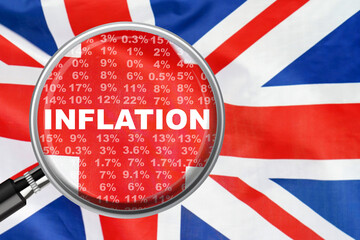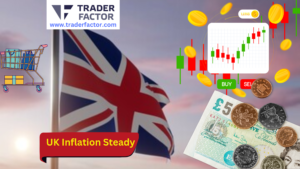
January saw a surprise drop in UK inflation, bringing cheer to investors who had been expecting more. Core and services costs – which the Bank of England keep an eye on – fell sharply too.
Sterling took a dip as people reset their expectations for rate hikes from the BoE – but sadly low-income families are still struggling with living expenses.
According to ONS data, CPI fell back down by nearly one percentage point compared with December’s figures – the biggest monthly decrease since 2017.
Economists had been expecting the cost of living to continue dwindling away from an all-time high in October, giving households more breathing room when it comes to their finances.
January showed marked improvement over previous months with the annual inflation rate dropping substantially — here’s hoping for even better results!
Factors That Can Affect The Exchange Rate In 2023
Despite a decrease in British core CPI to 5.8%, inflation is still higher than other major economies like the US or euro zone, and many experts believe it’ll stay that way due to labour shortages and Brexit effects on the economy.
In response, investors don’t think interest rates will rise when they meet this March – most likely only by 0.25%. Upon release of these stats, sterling dropped while bonds prices soared as traders reacted accordingly.
Earlier this month, the Bank of England gave a glimmer of hope that they may be nearing an end to ongoing interest rate hikes.
That optimism was further strengthened by information indicating services inflation had slowed in January, and private sector wage growth is easing according to Traderfactor Analysts. It’s looking like better news could soon be on the horizon!
Tuesday gave us a promising snapshot of wages, with impressive growth over the last year. Nevertheless, economic expansion has slightly decelerated in recent months – something that didn’t phase Finney, whose positive interest rates could be increased even further come March. Most economists agree!
Inflation Protection
Jeremy Hunt, the Finance Minister, reassured us that the government is still very much on alert to protect against inflation.
Despite a drop in costs for some sectors such as transport and hospitality during last month, he assured everyone there’s still plenty of work left to do before declaring victory!
Check out TraderFactor’s Economic Calendar
December VS. January Inflation Percentages Comparisons
While the British economy is expected to take a turn for the worse in 2023, signs of inflation cooling off provide some hope.
However, with prices especially high on food and non-alcoholic drinks only showing little change from last December’s 45 year record – it looks like households are still feeling the financial pressure!
Families on lower incomes are feeling the strain of inflation, with prices for basics like food and energy skyrocketing over 15% in late 2022.
This puts an unfair burden onto those who can least afford it, highlighting just how much inequality still exists in our society today.
The Consumer Price Index (CPI) from the ONS is important information that delves into what consumers can expect in terms of prices when purchasing goods and services.A super helpful figure that could potentially shake up currency values!

Events Happening Today
U.S. Retail Sales Up
After two months of consecutive declines, January saw an impressive surge in US retail sales – the biggest jump in almost two years!
From cars to everyday goods, Americans are clearly still keen on spending despite inflation and higher borrowing costs.
The resulting strength taken from consumer confidence is likely going to have Wall Street wondering if the Federal Reserve will continue pushing up interest rates throughout summertime as a means of cooling domestic demand.
Retailers are raking in the dough, factories keep humming along and economists have upgraded their growth estimates – what’s not to love?
Well, there is some concern that interest rates could surge higher than anticipated later this year. A recession may still be lurking on the horizon!
Last month showed a truly impressive increase in retail sales! With an anticipated dip due to the surge of holiday shopping, economists were surprised by 3.0% hike -the biggest since March 2021- after two months of decline.
It goes to show that shoppers are still out there buying goods and turning up the heat on this economy’s recovery!
Despite strong January retail sales, economists had been expecting a dip in February’s figures due to the impact of seasonal adjustments.
But, despite this cautious anticipation – surprise! Job growth blew through expectations and kept the good times rolling for another month.
Last month’s retail sales were fueled by a surge in buying for cars, furniture, food and beverages, electronics and appliances. Clothing stores also saw big increases along with general merchandise retailers as well as health & personal care outlets.
For those who are sporting goods aficionados or eager handymen there was still good news stores selling these items edged out some gains too.
Online store shoppers rejoiced at the 1.3% rebound from last month’s trend of declining purchases; showing that it is back on track for growth again!
Wall Street
Wall Street experienced a bit of decline while the dollar was on an upswing and Treasury prices went south.
The Labour Force
America’s workforce is thriving with unemployment falling to its lowest level in over half a century and wages continuing to rise.
In the last year, The Fed has steadily increased interest rates by 4.5% as part of their policy for continued growth; two further rate hikes are predicted during early 2019. All signs point towards an economy that continues growing!
Core Retail Sales
Retail spending is a key indicator of economic growth, and recent forecasts from JPMorgan and Goldman Sachs suggest the US economy may be on an upward trajectory.
In fact, quarterly GDP estimates could hit as high as 2%, which marks a significant improvement over last quarter’s rate of nearly 3%. It looks like there may still be plenty to smile about when it comes to America’s financial health!
Manufacturing Weakens
Manufacturing production stumbled in January, but there’s some hope for the sector yet! The Fed released their report on Wednesday and showed a welcome 1.0% jump back up – suggesting that this recession might not be as rough as feared.

Disclaimer:
All information has been prepared by TraderFactor or partners. The information does not contain a record of TraderFactor or partner’s prices or an offer of or solicitation for a transaction in any financial instrument. No representation or warranty is given as to the accuracy or completeness of this information. Any material provided does not have regard to the specific investment objective and financial situation of any person who may read it. Past performance is not a reliable indicator of future performance.
Author
-

Phyllis Wangui is a Financial Analyst and News Editor with qualifications in accounting and economics. She has over 20 years of banking and accounting experience, during which she has gained extensive knowledge of the forex, stock news, stock market, forex analysis, cryptos and foreign exchange industries. Phyllis is an avid commentator on these topics and loves to share her insights with others through financial publications and social media platforms.
View all posts



















